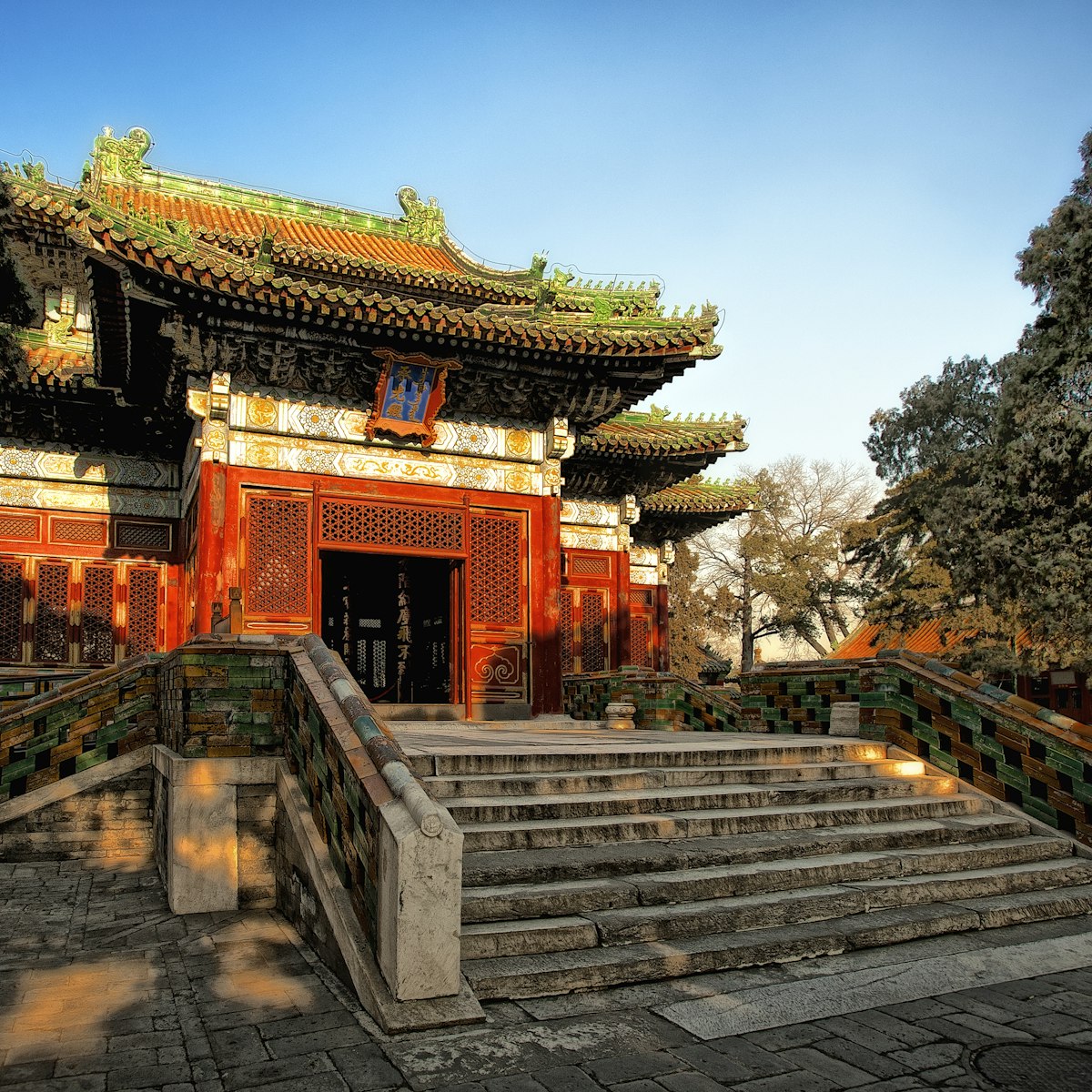Established according to feng shui in the cradle of Tianshou Mountain (天寿山, Tiānshòu Shān), this auspicious swath of nature was walled off by the Ming to house the mausolea of no less than 13 emperors (the first, Hongwu, was buried in Nanjing before the capital moved north). Only three tombs can be visited at time of research (and only one has been excavated), although grand plans have been put forward to restore and open all 13 to the public.
Despite not generally being considered a 'must-see' like the Great Wall or the Forbidden City, the Ming Tombs can be an incredibly rewarding place to visit on a quiet day in fine weather, beginning with a stroll along the Spirit Way between its solemn guard of stone beasts and officials, before exploring the first and largest of the tombs, the Yong Ling, boasting architecture that easily rivals the Forbidden City. At Ding Ling you can descend into the tomb itself, though the experience isn't as exciting as it sounds, being mostly empty and without ornament.
Aside from the Zhao Ling, the other 10 tombs are fenced off, best viewed from afar when standing atop the burial mound citadels at each of the three accessible tombs. That said, the hillsides here would reward the intrepid hiker with incredible views of the tomb sites spread over 40 sq km of fields, orchards, rivers and scattered villages.








